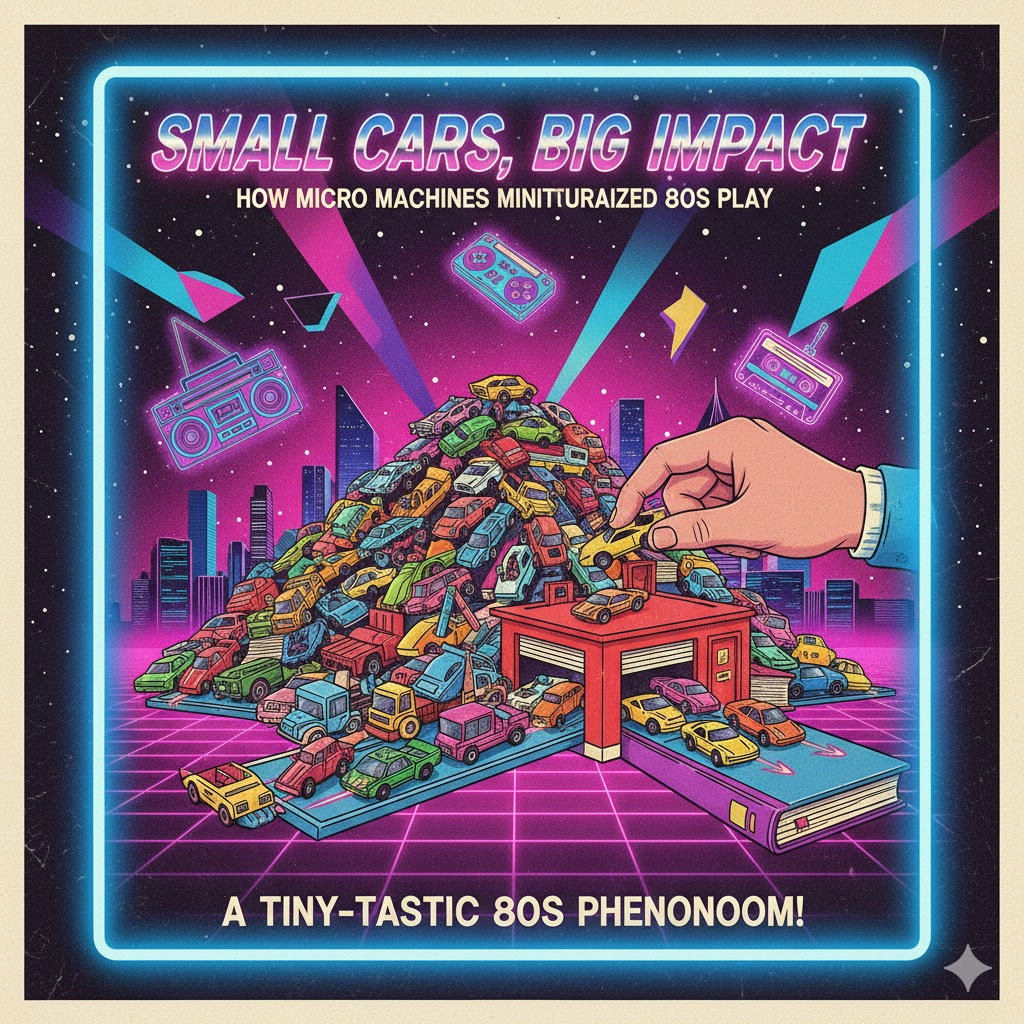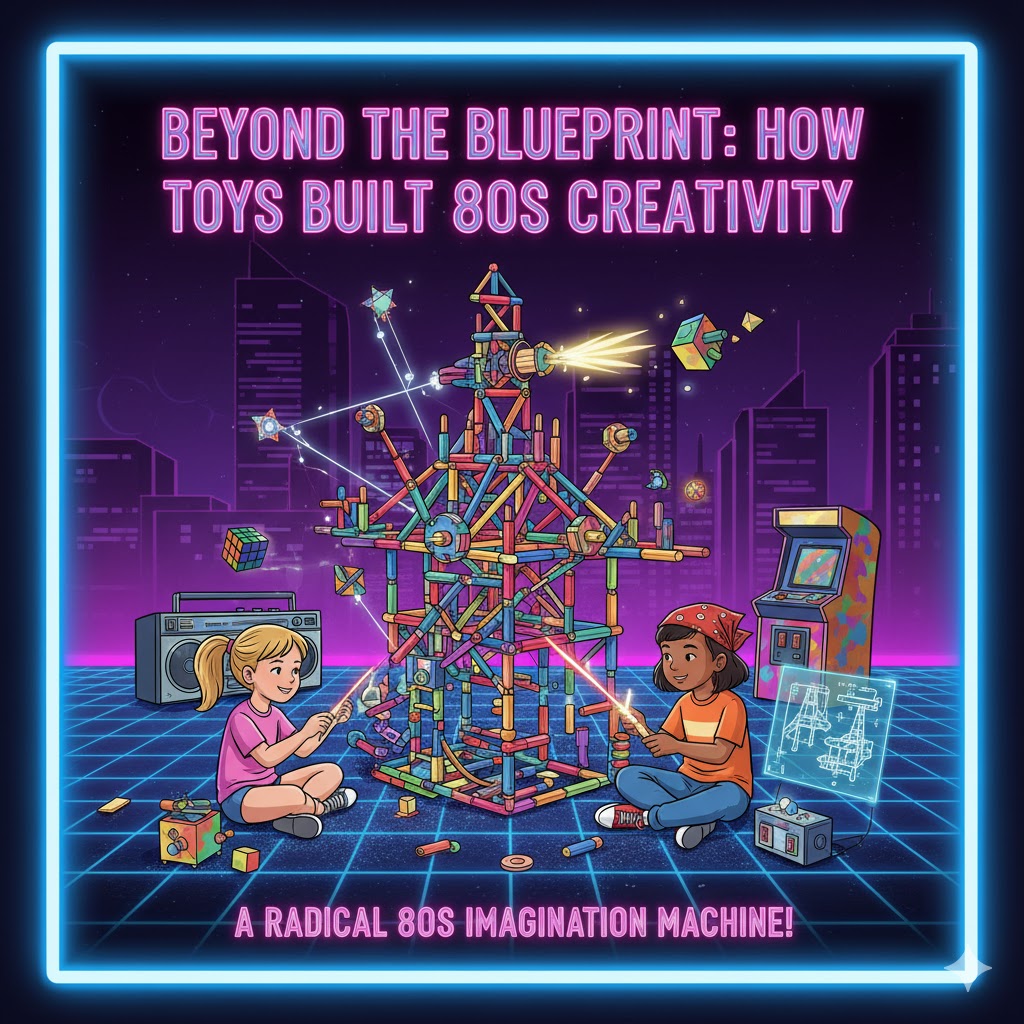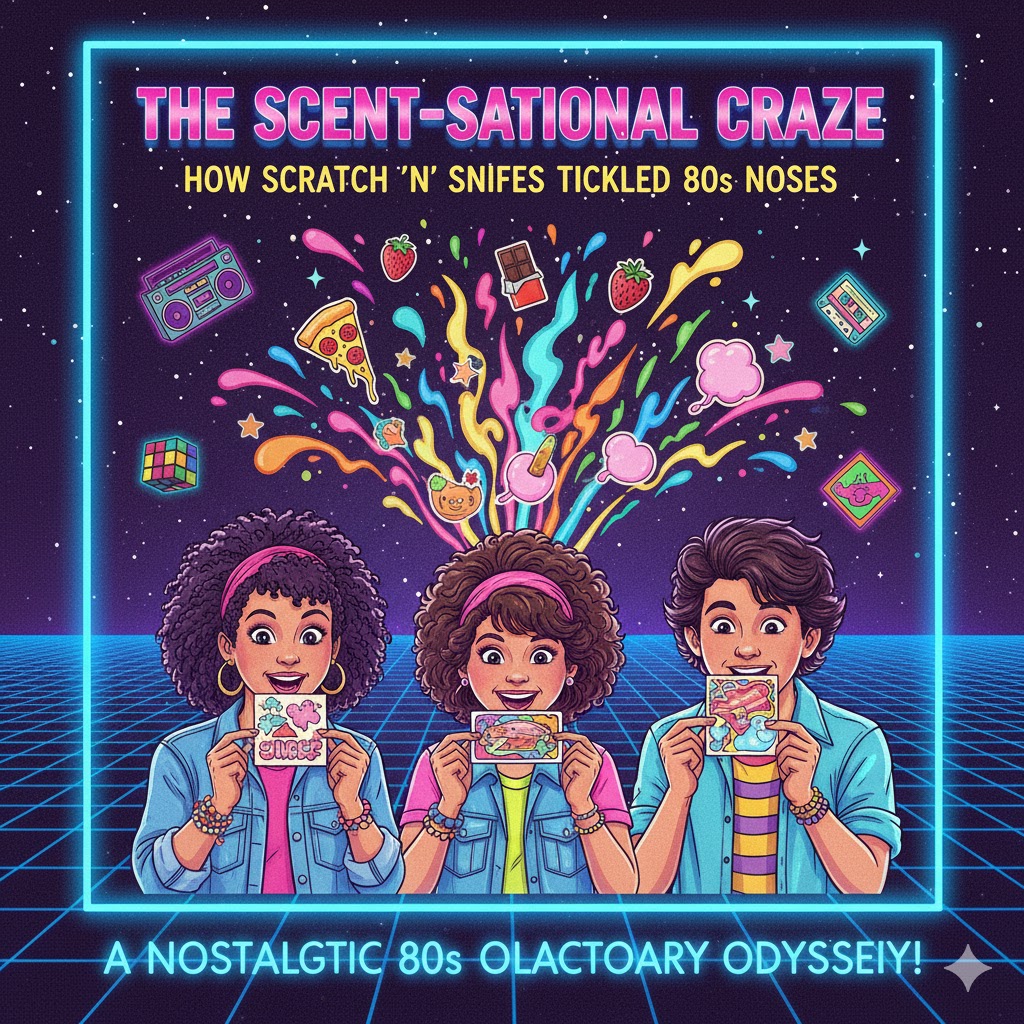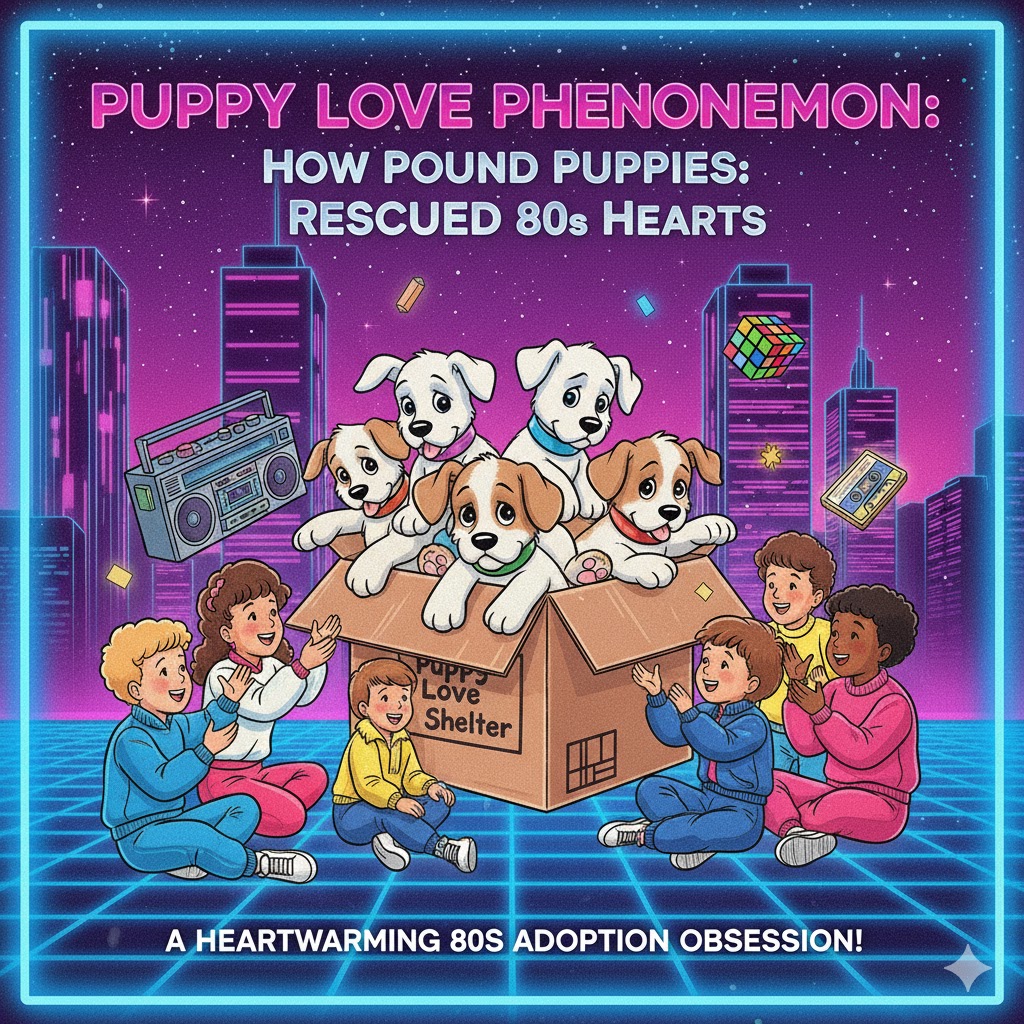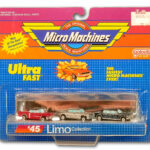 The 1980s were a decade defined by larger-than-life pop culture, neon colors, synthesizer-driven music, and an explosion of consumer-driven childhood entertainment. Amid the surge of action figures, dolls, and video games, one toy line captured the imagination of children in an entirely different way: Micro Machines. These tiny die-cast vehicles, often smaller than a dime, proved that small-scale toys could make a massive cultural impact. Micro Machines weren’t just miniature replicas of cars, planes, and playsets—they represented a revolution in how children played, collected, and imagined, shaping the landscape of 1980s pop culture in a unique and enduring way.
The 1980s were a decade defined by larger-than-life pop culture, neon colors, synthesizer-driven music, and an explosion of consumer-driven childhood entertainment. Amid the surge of action figures, dolls, and video games, one toy line captured the imagination of children in an entirely different way: Micro Machines. These tiny die-cast vehicles, often smaller than a dime, proved that small-scale toys could make a massive cultural impact. Micro Machines weren’t just miniature replicas of cars, planes, and playsets—they represented a revolution in how children played, collected, and imagined, shaping the landscape of 1980s pop culture in a unique and enduring way.
Micro Machines debuted in 1986, produced by the Galoob Company, and immediately stood out in the crowded toy market. Unlike larger, more cumbersome toys, Micro Machines offered a world of play in the palm of a child’s hand. The minuscule size of each vehicle allowed children to amass large collections without needing extensive storage space, fueling the thrill of collection and the joy of display. The tiny scale also challenged kids to think creatively about play, encouraging imaginative scenarios where Micro Machines could traverse entire worlds, from living room carpet highways to tabletop “cities” constructed out of everyday household objects.
The cultural impact of Micro Machines extended beyond their novelty size. They represented a democratization of play: affordability and collectibility made the toys accessible to a wide range of children. While other toys required substantial investment, Micro Machines were inexpensive enough to allow kids to build diverse fleets of cars, planes, boats, and even themed playsets. This accessibility played a critical role in their popularity, enabling children from different backgrounds to participate in the trend and fostering a sense of community through the exchange, trade, and display of collections.
Marketing played a significant role in the widespread adoption of Micro Machines. Television commercials, often featuring the tiny vehicles performing high-speed stunts on furniture, countertops, and other household objects, captivated children’s imaginations. Perhaps most famously, the commercials starred John Moschitta Jr., “the fastest talker in the world,” whose rapid-fire delivery and enthusiastic promotion of Micro Machines became iconic. The ads were so memorable that they themselves became a part of 1980s pop culture, inspiring parodies, references in other media, and a sense of excitement around the tiny toys that few other marketing campaigns could match.
Micro Machines also intersected with the decade’s fascination with scale and spectacle. The 1980s saw a proliferation of “big” in both media and products: blockbuster films, oversized toys, and high-energy music videos dominated the cultural landscape. Micro Machines subverted this trend by proving that small could be just as thrilling. Children were fascinated by the meticulous details of each miniature car, the tiny yet realistic paint jobs, and the intricate designs that mirrored real-life vehicles. This attention to realism, combined with the imaginative possibilities of play, elevated Micro Machines beyond simple toys to cultural artifacts that captured the spirit of the era.
The toys’ collectibility contributed significantly to their cultural impact. Micro Machines were sold individually and in sets, with hundreds of vehicles representing cars, motorcycles, airplanes, and themed series like city sets, military vehicles, and famous transportation models. This variety encouraged a sense of competition, trade, and collaboration among children. Collecting and trading Micro Machines became a social activity, fostering peer interaction, negotiation skills, and strategic thinking. The thrill of completing a set or acquiring a rare vehicle heightened engagement, turning simple toys into social currency and connecting children through a shared passion for miniature automobiles.
Micro Machines also influenced the creative ways children played with toys. The small size encouraged elaborate, imaginative scenarios that could span an entire room. Living rooms became sprawling cities, with Micro Machines racing across “highways” of couch cushions, dining tables, and bookshelves. Airplanes soared over household landscapes, boats navigated makeshift rivers in bathtubs, and police cars pursued imaginary criminals across carpets and floors. The scale of play transformed ordinary spaces into arenas of adventure, fostering creativity, problem-solving, and storytelling. These imaginative experiences reflected broader cultural values of the 1980s, emphasizing fun, ingenuity, and exploration.
The design of Micro Machines also mirrored contemporary automotive culture, which was a prominent aspect of 1980s media and fashion. Cars were symbols of status, independence, and excitement, reflected in music videos, movies, and television shows of the era. Micro Machines allowed children to engage with this automotive culture on a miniature scale, providing the thrill of car ownership, racing, and customization without the prohibitive costs of real vehicles. The toys’ realistic detailing, from chrome accents to tiny logos, enhanced the sense of authenticity, giving children the ability to immerse themselves in a realistic yet fantastical automotive universe.
Another factor in Micro Machines’ cultural significance was their adaptability across age groups. While primarily marketed to children, the toys also attracted older enthusiasts, collectors, and hobbyists who appreciated the craftsmanship and miniature scale. Adult collectors embraced Micro Machines for their nostalgia, artistic value, and the satisfaction of completing extensive sets. This cross-generational appeal ensured that Micro Machines transcended a single childhood fad, embedding themselves into the broader cultural consciousness of the 1980s and beyond.
Micro Machines also reflected broader trends in the intersection of play and media. Video games, action figures, and other toy lines encouraged interactive and imaginative play, but few captured the dynamic combination of miniaturization and action that Micro Machines offered. The toys bridged physical play and media consumption, inspiring television commercials, board games, and even computer games that extended the universe of Micro Machines into different formats. This multimedia integration demonstrated the potential for toys to influence cultural behavior beyond simple play, creating experiences that spanned imagination, collection, and entertainment.
The marketing of Micro Machines, particularly through television, emphasized performance and excitement. Commercials frequently showed cars performing gravity-defying stunts, boats jumping off ledges, and airplanes soaring through improbable household landscapes. This spectacle mirrored the high-energy ethos of the 1980s, reflecting a culture enamored with excitement, speed, and ingenuity. John Moschitta Jr.’s rapid-fire delivery added a sense of urgency and thrill, making each ad a miniature adrenaline rush and turning the promotion itself into a pop culture event. These commercials became iconic in their own right, referenced in comedic sketches, parodied in other media, and remembered as quintessentially 1980s.
The social and cultural impact of Micro Machines also extended into play-based learning. The toys encouraged spatial reasoning, fine motor skills, and imaginative problem-solving. Children learned to navigate vehicles across challenging terrains, plan racing circuits, and devise elaborate scenarios, fostering cognitive development alongside entertainment. This educational dimension, though subtle, enhanced the value of Micro Machines beyond their aesthetic and collectible qualities, embedding them as a formative part of childhood development during the decade.
Micro Machines also contributed to the growing culture of consumer engagement and brand loyalty. The constant release of new vehicles, themed sets, and limited editions encouraged children to return repeatedly to stores, seek out new releases, and participate in the excitement of collection. This engagement mirrored broader trends in 1980s consumer culture, where toys, clothing, and media franchises encouraged repeated interaction and brand investment. Micro Machines demonstrated how a simple concept—tiny vehicles—could generate sustained interest, social connection, and a lasting cultural footprint.
The legacy of Micro Machines is evident in their enduring recognition and nostalgic appeal. Adults who grew up collecting, racing, and trading the toys often cite them as quintessential childhood experiences. The brand’s influence can be seen in later miniature toys, collectible cars, and media franchises that emphasize detailed scale, imaginative play, and social interaction. Micro Machines helped define the standards of quality, creativity, and engagement in the toy industry, leaving a blueprint that continues to inspire toy designers, marketers, and enthusiasts.
Micro Machines’ impact on 1980s pop culture was also reinforced by their adaptability and diversity. The brand continually expanded its offerings, introducing playsets like race tracks, cityscapes, and themed collections that extended the imaginative possibilities. This adaptability mirrored the era’s cultural emphasis on innovation, diversity of experience, and media-driven engagement. Children could mix and match vehicles, create complex narratives, and participate in collaborative play, making Micro Machines a flexible and enduring element of 1980s childhood.
The toys also exemplified the decade’s fascination with collectibility and miniature worlds. The 1980s saw a surge in trading cards, action figures, and small collectibles that encouraged completionist behavior and social interaction. Micro Machines fit perfectly within this trend, providing tangible goals, social currency, and opportunities for negotiation and collaboration among peers. Children learned the value of trading, the excitement of discovering rare pieces, and the satisfaction of building comprehensive collections, all within the playful framework of miniature automotive culture.
Ultimately, Micro Machines’ cultural significance lies in their ability to transform scale into excitement, accessibility into collectibility, and simple toys into social and imaginative phenomena. They captured the essence of 1980s childhood: energetic, creative, and socially connected. Their combination of affordability, visual appeal, interactive play, and marketing genius ensured that Micro Machines were not just a fad but a defining element of the decade’s pop culture.
For those who grew up racing tiny cars across kitchen counters, building elaborate cityscapes out of books and blocks, or eagerly trading the latest limited-edition vehicles, Micro Machines are emblematic of the 1980s spirit. They represent the thrill of imagination, the excitement of collection, and the joy of small-scale adventures that could feel as grand as any blockbuster movie or video game.
The legacy of Micro Machines persists because they proved that size does not limit cultural impact. Tiny vehicles inspired creativity, social interaction, and a lifelong appreciation for miniature craftsmanship. They exemplify how toys can influence play patterns, media consumption, and social dynamics, leaving an indelible mark on childhood and pop culture alike. Micro Machines were more than miniature cars—they were a miniature revolution that captured the energy, imagination, and exuberance of the 1980s, securing their place in the annals of toy history and cultural memory.
Micro Machines are a testament to how a small idea, executed with creativity, accessibility, and marketing brilliance, can leave a massive imprint. They are remembered not only for their size but for the vast worlds of fun and imagination they unlocked for children across the decade. Their place in 1980s pop culture is secure: a tiny toy with a giant legacy, inspiring creativity, competition, and nostalgia for generations of fans.
